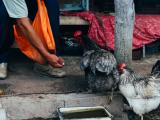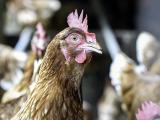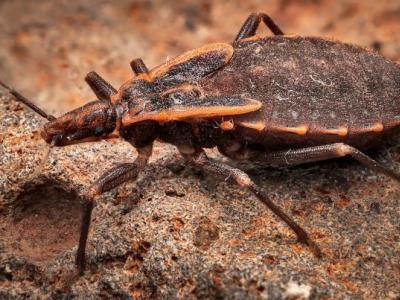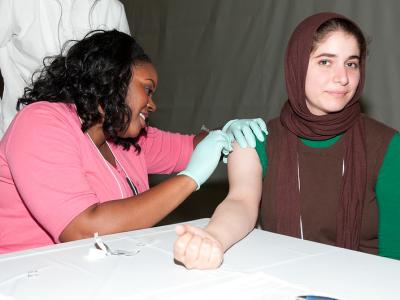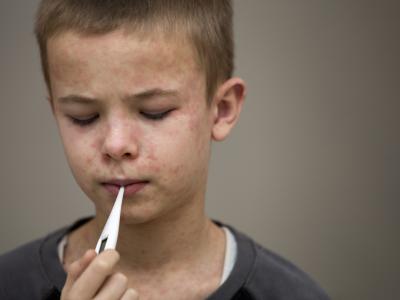Apr 22, 2011
Researchers identify protein that may help combat flu
A new study has shown that a protein administered nasally can protect mice against influenza, according to a press release today from the American Thoracic Society, publisher of the American Journal of Respiratory and Critical Care Medicine, in which the study appears. The study involved two steps. First, researchers from the University of Texas, the US CDC, Pfizer, and other institutions infected two types of mice with influenza virus: normal "wild-type" mice and mice genetically modified to possess a protein called granulocyte macrophage-colony stimulating factor, or GM-CSF, in the lungs. GM-CSF enhances alveolar macrophages, which are part of the innate immune response. After infection with either seasonal H1N1, pandemic 2009 H1N1, or H3N2 flu, all the wild-type mice died. The GM-CSF mice, after a brief period of weight loss, survived and regained lost weight. In the second part of the experiment, the
team applied GM-CSF in a nasal spray to wild-type mice and then challenged them with flu virus. Those mice likewise all survived. "Such unique and unambiguous results demonstrate the great potential of GM-CSF," said Homayoun Shams, PhD, of the University of Texas, the study's principal investigator. "Unlike a vaccine, GM-CSF does not rely heavily on the body's ability to mount an immune counter-attack against a specific antigen or virus strain, but enhances the speed of local responses to virus infection and delicately balances the host immune responses." But John Oxford, a University of London virologist, said in a BBC News story today, "Transferring [the technology] into humans can be quite difficult. . . . So first we'll see how it pans out in mice, then see how it can possibly apply to humans."
Apr 22 American Thoracic Society news release
Apr 7 Am J Resp Crit Care Med abstract
Apr
22 BBC News story
Bangladesh reports H5N1 outbreaks at 30 more farms
Bangladesh's livestock ministry yesterday reported 31 more H5N1 avian influenza outbreaks, according to an update to the World Organization for Animal Health (OIE). The outbreaks occurred between the middle of March through mid April, and all but one involved a commercial poultry farm. The outbreaks struck birds in five different provinces, with most of them occurring in Rajshahi, Dhaka, and Chittagong. The virus killed 26,543 poultry, and the remaining 153,888 birds at the affected sites were culled to curb the spread of the disease.
Apr 21 OIE report


